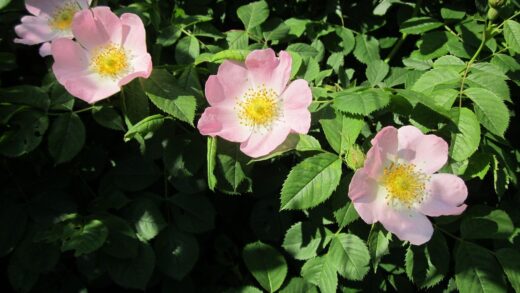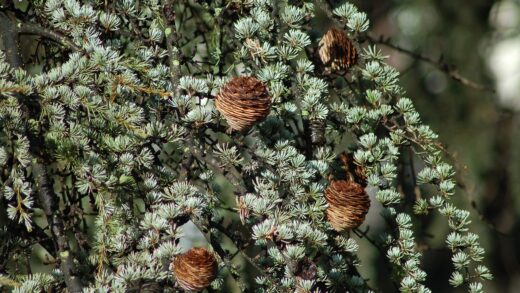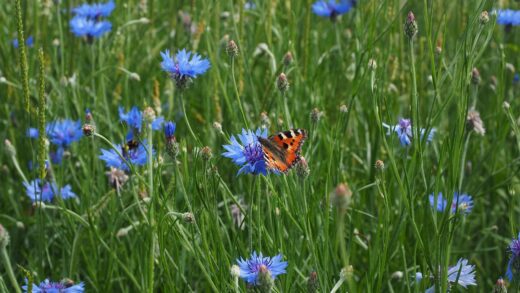Orpine, a resilient and visually striking succulent, has earned its place as a favorite in many perennial gardens and rockeries due to its low-maintenance nature and late-season appeal. This plant, with its fleshy leaves and sturdy stems, provides architectural interest from spring until the first heavy snows. Its ability to thrive in conditions that would challenge many other ornamentals makes it an invaluable asset for creating robust and drought-tolerant landscapes. Understanding the fundamental principles of its care is the first step toward cultivating a thriving specimen that will reward the gardener with years of beauty.
Caring for orpine begins with an appreciation for its natural habitat, which often includes rocky, well-drained slopes. This inherent toughness means it is remarkably self-sufficient once established in the garden. It is crucial to replicate these conditions as closely as possible to ensure the plant’s long-term health and vigor. Over-attentiveness, particularly in the form of excessive watering or rich soil, can be more detrimental than neglect. The key is to provide a foundation that allows the plant to express its natural resilience without unnecessary intervention.
The lifecycle of orpine offers dynamic visual interest throughout the seasons, a characteristic that should be supported through proper care practices. In spring, the emerging rosettes of blue-green foliage are a welcome sight, slowly elongating into the upright stems that define the plant’s form. As summer progresses, these stems are topped with broccoli-like flower heads that gradually open into stunning displays of pink, red, or white blossoms in late summer and autumn. Even in winter, the dried seed heads provide structure and a food source for birds, highlighting the plant’s year-round contribution to the garden ecosystem.
Ultimately, the successful cultivation of orpine hinges on a ‘less is more’ philosophy. It is a plant that prospers with a hands-off approach, making it ideal for both novice gardeners and seasoned horticulturists seeking to create sustainable and water-wise garden designs. By focusing on providing the correct foundational elements—sunlight, drainage, and minimal intervention—one can ensure this perennial stalwart remains a healthy and captivating feature in the landscape for many years to come. This approach respects the plant’s innate characteristics and allows it to perform to its full potential with minimal fuss.
Soil and site selection
The cornerstone of successful orpine cultivation is providing the correct soil environment, which is paramount to the plant’s health. Orpine demands excellent drainage above all else, as its succulent nature makes it highly susceptible to root rot in waterlogged conditions. An ideal soil mix is sandy or gravelly, which allows water to percolate away from the roots quickly and efficiently. Heavy clay soils must be amended significantly with organic matter like compost, as well as inorganic materials such as grit or coarse sand, to improve their structure and porosity before planting.
More articles on this topic
When selecting a site, consider the plant’s mature size and its need for unimpeded air circulation. Good airflow around the plant helps to prevent the development of fungal diseases, which can occasionally become an issue in humid or overly crowded conditions. Planting orpine on a gentle slope or in a raised bed can further enhance drainage and air movement. Avoid low-lying areas in the garden where water tends to collect, especially during winter, as this combination of cold and wet is often fatal to the plant.
The pH of the soil is another factor to consider, although orpine is quite adaptable in this regard. It generally prefers a neutral to slightly alkaline soil pH, but it will tolerate slightly acidic conditions as long as the drainage is impeccable. It is rarely necessary to amend the soil pH specifically for this plant unless the existing soil is extremely acidic. A simple soil test can provide valuable information if there are concerns about the site’s suitability, but in most garden settings, focusing on drainage is the most critical aspect of soil preparation.
Finally, while orpine is tough, it benefits from a location that offers some protection from harsh winter winds, especially in colder climates. The desiccating effect of strong winds can damage the overwintering crown of the plant. Planting it near a wall, fence, or alongside other sturdy perennials can provide a sufficient windbreak. This strategic placement ensures that the plant emerges from dormancy in the spring with minimal damage and is ready to produce a robust display of foliage and flowers.
Sunlight and temperature considerations
Orpine is a quintessential sun-loving perennial, requiring a minimum of six to eight hours of direct sunlight per day to truly thrive. This exposure to full sun is critical for developing strong, upright stems that can support the weight of the large flower heads later in the season. When planted in shadier conditions, the plant will often become leggy and etiolated as it stretches towards the light source. This not only results in a floppy, less attractive habit but also leads to weaker stems that are prone to breaking.
More articles on this topic
The intensity of the sunlight also influences the coloration of both the foliage and the flowers. Many cultivars of orpine develop their richest and most vibrant leaf colors, which can range from deep green to burgundy and near-black, only when exposed to ample sunlight. Similarly, the flower colors will be more saturated and the blooming period more profuse and extended in a sunny location. In partial shade, the foliage may revert to a plain green, and the floral display is often significantly diminished, undermining the plant’s ornamental value.
From a temperature perspective, orpine is exceptionally hardy and adaptable, tolerating a wide range of climates. It is generally hardy in USDA zones 3 through 9, capable of withstanding both significant summer heat and freezing winter temperatures. The plant’s succulent leaves help it conserve water during hot, dry spells, making it an excellent choice for xeriscaping and gardens in arid regions. Its ability to enter dormancy allows it to survive cold winters, with the crown of the plant remaining viable just below the soil surface.
Despite its heat tolerance, in extremely hot southern climates, a location that provides some light afternoon shade can be beneficial. The intense afternoon sun can sometimes lead to scorching or sun scald on the leaves of certain cultivars, especially if the plant is under any drought stress. Providing this brief respite from the harshest sun of the day can help maintain the quality of the foliage without significantly compromising the plant’s overall vigor or its flowering potential. This slight adjustment ensures the plant remains attractive even through the peak of summer heat.
Watering and feeding regimen
The watering needs of orpine are minimal once the plant is established, a direct reflection of its succulent characteristics and drought-tolerant nature. During its first growing season, consistent watering is necessary to help the plant develop a strong and extensive root system. After this initial period, however, natural rainfall is often sufficient to meet its needs in many climates. It is far more common for orpine to suffer from problems related to overwatering, such as crown and root rot, than from underwatering.
A reliable method for determining when to water is to check the soil moisture. The top two to three inches of soil should be allowed to dry out completely before considering irrigation. When watering is necessary, it is best to do so deeply and infrequently, thoroughly soaking the root zone to encourage deep root growth. This practice makes the plant more resilient during extended dry periods. Avoid shallow, frequent watering, as this can lead to a weak root system and may create a perpetually damp surface environment conducive to fungal diseases.
When it comes to fertilization, orpine has very modest requirements and generally performs best in soil that is not overly enriched. Rich, fertile soil can promote lush, soft growth that is weak, prone to flopping over, and more susceptible to pests and diseases. In most average garden soils, supplemental feeding is not necessary for the plant’s health. The plant has evolved to thrive in lean conditions, and excessive nutrients can be counterproductive to achieving a sturdy, well-formed specimen.
If the soil is particularly poor or sandy, a single, light application of a balanced, slow-release granular fertilizer in the early spring can be beneficial. Alternatively, top-dressing the soil with a thin layer of compost will provide a gentle boost of nutrients without overwhelming the plant. It is crucial to avoid high-nitrogen fertilizers, as these will encourage excessive leafy growth at the expense of flowers and stem strength. The goal is to support healthy, sustainable growth rather than forcing rapid, weak development.
Pruning and maintenance tasks
Pruning orpine is a straightforward task that primarily involves tidying the plant and encouraging a desirable growth habit. The most significant pruning occurs in late winter or early spring before new growth emerges. At this time, the dried stems and flower heads from the previous season should be cut back to the ground level or to the emerging basal foliage. This cleanup removes dead material, improves air circulation around the crown, and makes way for the fresh, new shoots of the upcoming season.
Some gardeners prefer to leave the dried seed heads in place through the winter for ornamental interest and to provide food for birds, a practice that adds structure to the winter garden. If this approach is taken, the cleanup is simply delayed until the threat of heavy snow has passed. There is no harm to the plant in leaving the old stems on through the winter months. The timing of this main pruning task is largely a matter of aesthetic preference and garden maintenance schedules.
A secondary pruning technique, sometimes referred to as the ‘Chelsea chop’, can be employed in late spring or early summer to control the plant’s height and prevent flopping. This involves cutting the front half of the plant’s stems back by about one-third to one-half their height. This encourages branching, resulting in a sturdier, more compact plant with more, albeit slightly smaller, flower heads. The unpruned back half will bloom at the normal time, while the pruned section will bloom a few weeks later, effectively extending the overall flowering period of the clump.
Beyond pruning, general maintenance for orpine is minimal. It is important to monitor the plant for any signs of disease or pest infestation, although these are relatively uncommon. Weeding around the base of the plant is also beneficial, as it reduces competition for water and nutrients and improves air circulation. A thin layer of gravel or stone mulch can help suppress weeds and maintain the excellent drainage that is critical to the plant’s health, while also providing a finished look to the planting area.
Pest and disease management
Orpine is a remarkably robust and healthy plant, generally untroubled by serious pest or disease issues, which is one of its most appealing attributes for low-maintenance gardening. However, no plant is entirely immune, and being aware of potential problems allows for swift and effective intervention. The most common pests that may occasionally bother the plant are aphids and mealybugs. These sap-sucking insects can congregate on the tender new growth and flower buds, but significant infestations are rare on healthy, well-sited plants.
Should aphids become a problem, they can often be managed with a strong jet of water from a hose, which will dislodge them from the plant. For more persistent infestations, insecticidal soap or horticultural oil can be effective, providing a low-toxicity solution. Mealybugs, which appear as small, white, cottony masses, can be spot-treated with a cotton swab dipped in rubbing alcohol. Ensuring good air circulation and avoiding over-fertilization, which produces soft growth attractive to these pests, are the best preventative measures.
The primary disease concern for orpine is root and crown rot, which is almost always a consequence of poor drainage and excessive moisture rather than a specific pathogen. Symptoms include wilting, yellowing leaves, and a soft, mushy base of the plant. Prevention is the only effective strategy; once rot has taken hold, the plant is often unsalvageable. This underscores the absolute necessity of planting orpine in well-draining soil and being judicious with watering.
Less common fungal issues like powdery mildew or leaf spots can occasionally appear, particularly in humid weather or in crowded plantings with poor air circulation. These diseases are rarely life-threatening to the plant. Improving air movement by thinning out surrounding plants or dividing overcrowded clumps of orpine can help. If necessary, affected foliage can be removed and disposed of, and in severe cases, a fungicide can be applied, though this is seldom required for this resilient species.


















